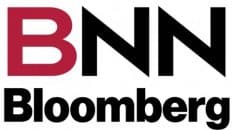This year, it may be high gas prices that make us shelter in place – not the pandemic.
The inflationary wave that is flooding consumers’ economic boats has changed from a ripple to a tsunami. The most visible and wallet sensitive factor in the spiraling cost equation is the price of energy in general and fossil fuels in particular.
With gasoline pump prices now approaching the $2.00/L level and even humble diesel surpassing premium 94 octane pricing some, if not all consumers, must be asking when this madness will end.
The answer may be that this is just the beginning!
How did we get on this rocky road and where is it leading us?
There are two sides to every story and two sides of the Atlantic. On this side of the pond, we have a dangerous, out of focus picture of supply and demand with the emphasis on the lack of and diminishing ability to supply. This includes inventory levels of crude oil, which are now 15% below the 5-year average and most notably diesel now down 22%. U.S. east coast levels of distillates are 50% lower than the numbers a year ago, and the lowest since 2008. The Cushing, OK tank farm is the end point for West Texas Intermediate (WTI) futures pricing.
Two years ago, the inventories at Cushing were at 65 million barrels, today we’re at 29 million barrels. On the demand side, jet fuel, part of the middle distillate group, is up 28%.
So, supply is tight to say the least and the reason diesel prices are through the roof.
It’s these record high diesel prices that are dragging up gasoline prices in a sort of, slip stream effect. As demand for gasoline increases after Memorial Day, gasoline prices will increase and drag up diesel in the same way.
On the other side of the Atlantic, the EU has declared that financial sanctions are not enough and will shut down Russian supply of crude and refined products by the end of the year.
This amounts to 4 million barrels per day to which, when you add in the 700,000 bpd that the U.S. has already shut down, means that somehow we have to replace close to 5 million bpd of supply.
Pray tell, how do you do that?
What about OPEC +? Surely, they can just turn on the taps.
Well, only 2 of the 23 members have spare capacity those being the Saudis and the UAE, but neither seem anxious to help because they like the revenue stream the way it’s flowing at $105/bbl.
The U.S. could crank up the shale oil sector and increase exports.
But increasing exports of U.S. crude and refined products just reduces the Strategic Petroleum Reserve (SPR), along with conventional inventories and this then increases prices just as they are increasing today.
The painful truth is that the only way to replace 5 million bpd of Russian crude and refined supply is to enter into a world of demand destruction. If crude oil, gasoline, and diesel consumption decreases, then less crude is needed.
The way to destroy demand is by raising prices to painful levels and to make gasoline so expensive that it’s not worth it to take the car out of the driveway.
And that’s where we are and where the car may stay for quite a while.
– Roger McKnight – B.Sc., Senior Petroleum Analyst








Add comment